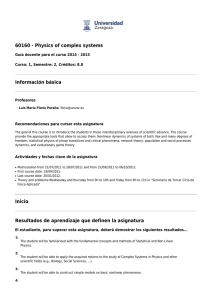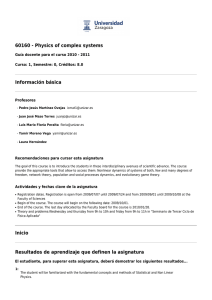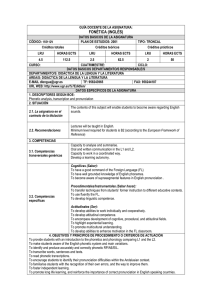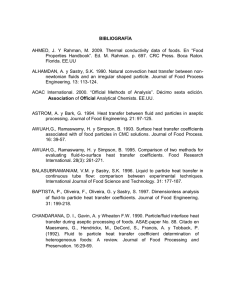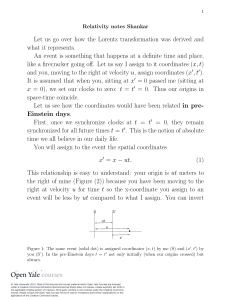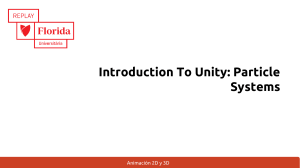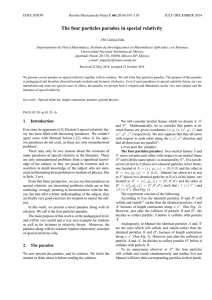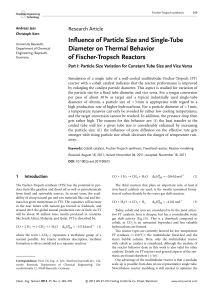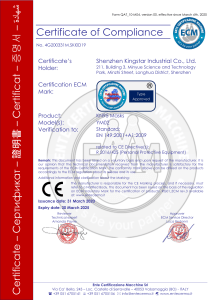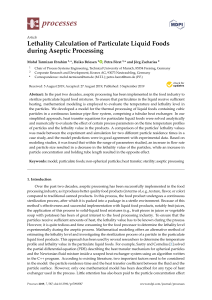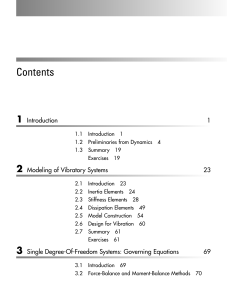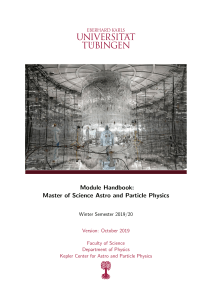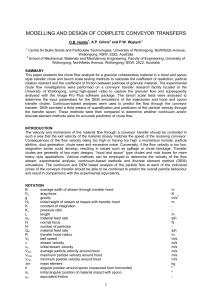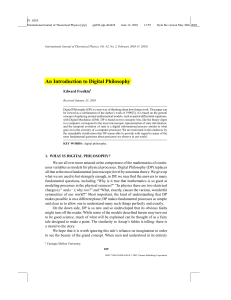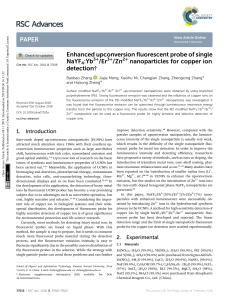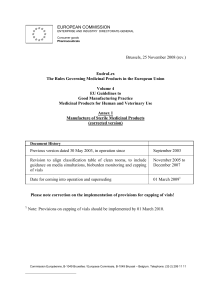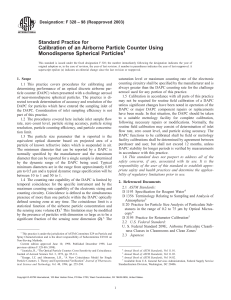60164 - Particle physics Información básica Inicio Resultados de
Anuncio
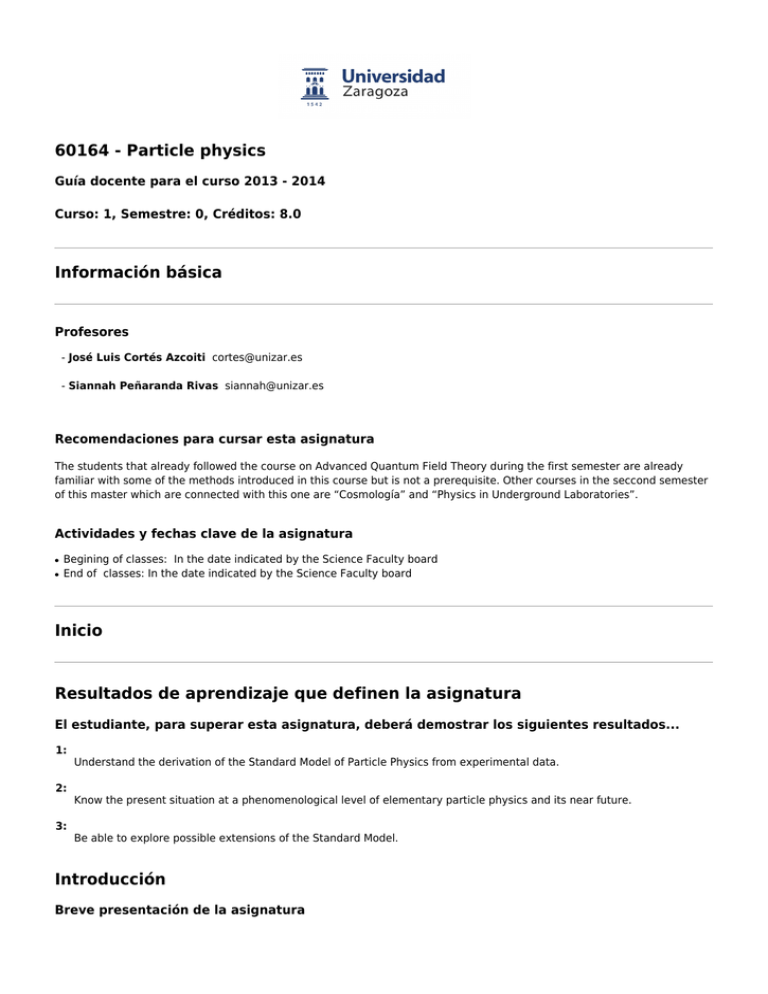
60164 - Particle physics Guía docente para el curso 2013 - 2014 Curso: 1, Semestre: 0, Créditos: 8.0 Información básica Profesores - José Luis Cortés Azcoiti [email protected] - Siannah Peñaranda Rivas [email protected] Recomendaciones para cursar esta asignatura The students that already followed the course on Advanced Quantum Field Theory during the first semester are already familiar with some of the methods introduced in this course but is not a prerequisite. Other courses in the seccond semester of this master which are connected with this one are “Cosmología” and “Physics in Underground Laboratories”. Actividades y fechas clave de la asignatura ● ● Begining of classes: In the date indicated by the Science Faculty board End of classes: In the date indicated by the Science Faculty board Inicio Resultados de aprendizaje que definen la asignatura El estudiante, para superar esta asignatura, deberá demostrar los siguientes resultados... 1: 2: 3: Understand the derivation of the Standard Model of Particle Physics from experimental data. Know the present situation at a phenomenological level of elementary particle physics and its near future. Be able to explore possible extensions of the Standard Model. Introducción Breve presentación de la asignatura The aim of this course is to present the application of modern theoretical physics methods to the realm of elementary particle physics. The students that already followed the course on Advanced Quantum Field Theory during the first semester are already familiar with some of the methods introduced in this course but is not a prerequisite. Other courses in the seccond semester of this master which are connected with this one are “Cosmología” and “Physics in Underground Laboratories”. Contexto y competencias Sentido, contexto, relevancia y objetivos generales de la asignatura La asignatura y sus resultados previstos responden a los siguientes planteamientos y objetivos: This course is interesting for all students which on the one hand want to know the actual state of our knowledge in microscopic physics and from a methodological point of view it provides a very detailed application of field theoretical methods which can be interesting in many areas of modern physics. Students in theoretical condensed matter physics as well as theoretical high energy physics and also students in phenomenology and experiments in particle physics may find relevant information for their future work in this course. At the end of the course the students should understand the main steps that have lead us to the formulation of the standard model and should be able to analize the consequences of different extensions of the standard model based on the addition of new fields and or interactions. Contexto y sentido de la asignatura en la titulación The aim of this course is to present the application of modern theoretical physics methods to the realm of elementary particle physics. The students that already followed the course on Advanced Quantum Field Theory during the first semester are already familiar with some of the methods introduced in this course but is not a prerequisite. Other courses in the seccond semester of this master which are connected with this one are “Cosmología” and “Physics in Underground Laboratories”. Al superar la asignatura, el estudiante será más competente para... 1: 2: 3: To analyze the current knowledge concerning the formulation and experimental confirmation of the Standard Model of Particle Physics. Understanding of the advances that have taken place in Particle Physics as a result of previous knowledge and the experimental observations made in colliders. Understand and use the theoretical and mathematical techniques needed to formalize the above items. Importancia de los resultados de aprendizaje que se obtienen en la asignatura: The current development of our understanding of the Universe is at present in a golden age given the recent start ofthe Large Hadron Collider (LHC), the world's largest and highest-energy particle accelerator. It is a particle accelerator used by physicists to study the smallest known particles – the fundamental building blocks of all things. It will revolutionise our understanding, from the minuscule world deep within atoms to the vastness of the Universe. In the course of the last century, physicists ventured into ever smaller dimensions. Today, the Standard Model of particle physics very successfully describes the fundamental building blocks of our world and the forces acting between them. Nevertheless, central questions remain unanswered. Where does the mass come from? What is dark matter made of? What happened during the big bang? Are there any possible extension of the Standard Model? . The multidisciplinary nature of this subject makes it especially relevant to the student's training by requiring the deep knowledge of fundamental aspects of particle physics nowadays and the application of different theoretical tools. In addition, this course will enable students to develop a critical and analytical thinking both on open questions in particle physics at present and in ways that transcend the academic sphere. Evaluación Actividades de evaluación El estudiante deberá demostrar que ha alcanzado los resultados de aprendizaje previstos mediante las siguientes actividades de evaluacion 1: 2: 3: 4: There will be a continuous evaluation based on the exposition of the solutions to problems proposed on each of the topics covered during the course. This continuous evaluation will amount to 50% of the final mark. Each student will make a choice of one the topics covered in the course (by following the three points indicated in the training) on which to elaborate on and will present a written summary with the results and conclusions of this study. The evaluation of this work will amount to 35% of the final mark. The student participation in class will be taken into account (15% of the final mark). Global evaluation This course is designed for on-site students. In any case those students that would not be able to attend regularly to the course as well as those that do not agree with the results obtained in the continuous evaluation will have the opportunity to realize an exam with several theoretical questions related to the topics covered in the course and two short exercises. Actividades y recursos Presentación metodológica general El proceso de aprendizaje que se ha diseñado para esta asignatura se basa en lo siguiente: Two thirds of the classes will be dedicated to the presentation of theoretical aspects of the course. These presentations will use new technologies as well as more traditional methods (blackboard) depending on the subject. The remaining third of classes will be dedicated to the resolution of problems proposed along the course. This classes will be part of the evaluation of the students and at the same time will facilitate to introduce the appropriate modifications in the program in order to optimize the learning process of the students. Actividades de aprendizaje programadas (Se incluye programa) El programa que se ofrece al estudiante para ayudarle a lograr los resultados previstos comprende las siguientes actividades... 1: Theoretical framework Field theory review Standard Model: particle content, interactions, symmetries Scattering formalism. Applications Boson decays Leptons: decays, collisions Effective Lagrangians Hadrons: QCD Beyond the standard model Neutrino masses Effective theories Problems and proposed solutions Planificación y calendario Calendario de sesiones presenciales y presentación de trabajos Referencias bibliográficas de la bibliografía recomendada
